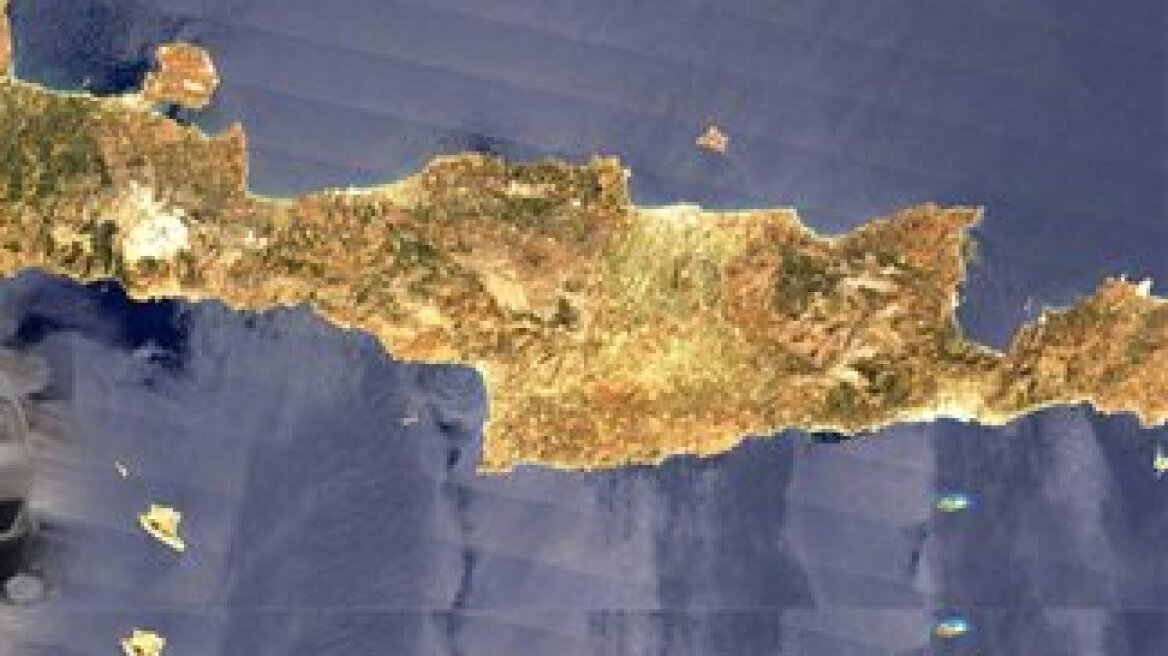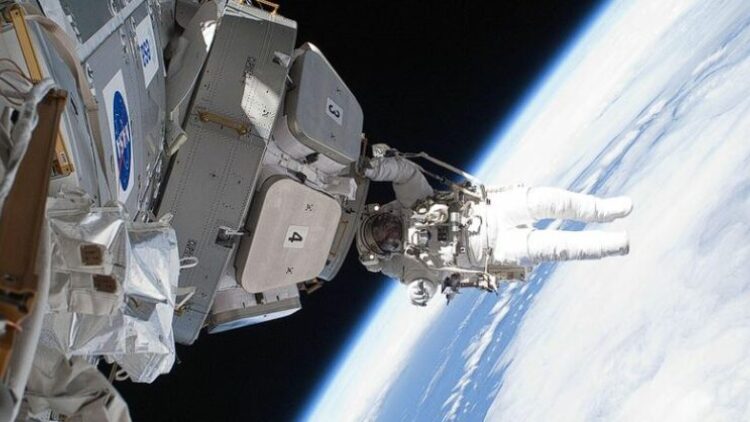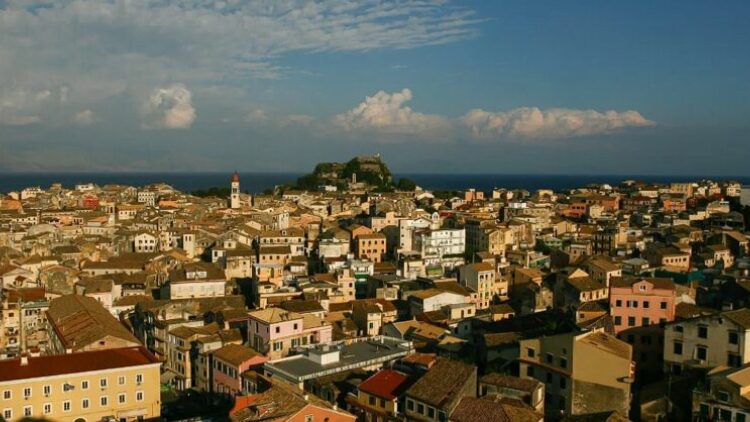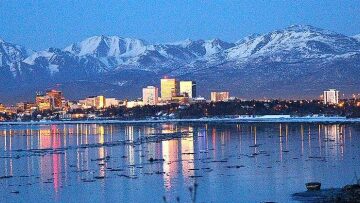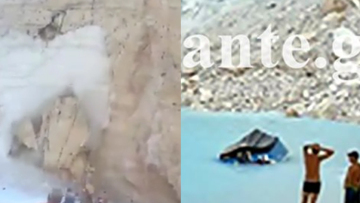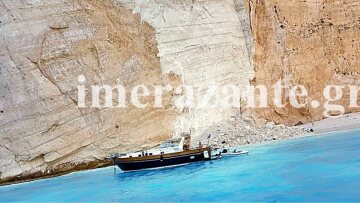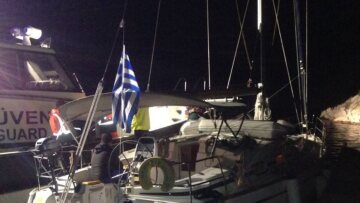
«An earthquake that will not lead to a tsunami nor major aftershocks…»
«An earthquake that will not lead to a tsunami nor major aftershocks…»
Scientists don’t seem to be very concerned about the largest earthquake in over three years in Greece, which was felt from Cairo to Malta. They speak of an intermediate-depth earthquake, which cannot cause tsunamis, or activate other faults in the so-called «Greek arc». Specialised seismologists, talking to protothema.gr, appear reassuring, and they refute the idea that the earthquake that occurred in the area between Crete and Kasos is a consequence of the strong earthquake that hit Japan.
«The main characteristic is that we are dealing with an intermediate-depth earthquake with a focal point of around 70 chiliastria» said Dr. Efthimios Lekkas, professor of Dynamic Tectonic & Applied Geology at the University of Athens, and Vice President of Earthquake Planning and Protection, talking to protothema.gr. He added that «deep earthquakes do not have an aftershock sequence or if they do, it is degraded. It's a one-off situation. Quakes of this kind are the main event. As a fairly deep earthquake, it will not cause a tsunami, and the fault will not reach the bottom of the sea. There is no connection with Japan and it will not affect other surface faults.»
Gerasimos Papadopoulos, Director of Research of the Athens Observatory Geodynamic Institute, expresses similar views. «This earthquake has a key feature, which is its intermediate depth. If there are aftershocks, they will be few and of a low volume. We cannot know whether it will activate other faults but it is highly unlikely, while the connection with Japan is mere scientific speculation. The fact that it was felt over a wide area is another characteristic of earthquakes of this kind.»
What is the «Greek arc»?
It might be that the Pacific Zone, which produced the 8,9R earthquake in Japan, is the area with the highest seismic activity in the world, but Greece too holds a dangerous record. The so-called «Greek arc» is the most seismically active area from Gibraltar to and China.
«The main characteristic is that we are dealing with an intermediate-depth earthquake with a focal point of around 70 chiliastria» said Dr. Efthimios Lekkas, professor of Dynamic Tectonic & Applied Geology at the University of Athens, and Vice President of Earthquake Planning and Protection, talking to protothema.gr. He added that «deep earthquakes do not have an aftershock sequence or if they do, it is degraded. It's a one-off situation. Quakes of this kind are the main event. As a fairly deep earthquake, it will not cause a tsunami, and the fault will not reach the bottom of the sea. There is no connection with Japan and it will not affect other surface faults.»
Gerasimos Papadopoulos, Director of Research of the Athens Observatory Geodynamic Institute, expresses similar views. «This earthquake has a key feature, which is its intermediate depth. If there are aftershocks, they will be few and of a low volume. We cannot know whether it will activate other faults but it is highly unlikely, while the connection with Japan is mere scientific speculation. The fact that it was felt over a wide area is another characteristic of earthquakes of this kind.»
What is the «Greek arc»?
It might be that the Pacific Zone, which produced the 8,9R earthquake in Japan, is the area with the highest seismic activity in the world, but Greece too holds a dangerous record. The so-called «Greek arc» is the most seismically active area from Gibraltar to and China.
The «Greek arc» begins from Corfu, crosses the southern Ionian Sea, east to the Peloponnese, passes south of Crete and ends up in Rhodes. This seismic zone can produce earthquakes which can reach even 8,3 degrees on the Richter scale, as shown by the quake back in 365 AD in the southwest of Crete. The reason that the «Greek arc» produces such strong earthquakes is the collision of the African plate with the Eurasian one, where the former gets submerged under the latter by 4,5 cm per year.
The «devil's triangle» is detected at the westernmost tip of the Greek arc, too. It is a seismic area with particular tectonic characteristics that ranks top of the list of areas with the highest seismic activity in the Aegean and Europe.
Along the coast of western Greece, from Corfu to the west of Crete, seismic activity can be divided broadly into three areas.
The first area is located north of Lefkada, where seismic activity is due to compressive forces of approximately eastern-western direction.
The second area is located south of Kefalonia and is the western part of the Greek arc. The seismic activity there is due to the convergence between the African plate and the Aegean one, and the submergence of the former under the latter. The result of this is the manifestation of intermediate-depth seismic activity beneath Peloponnisos and to the east, almost to the Cyclades.
The third area is located between the former two, in the broader area of Kefalonia, from Zakynthos to Lefkada. Seismic activity here occurs mainly along a fault which has a northeastern-southwestern direction. The total relative motion near the fault is in the range of 25 millimeters per year.
Due to the tectonic qualities of the area, the large number of small and intermediate-size earthquakes and the increased frequency of powerful, destructive ones, are characteristic of seismic activity in western Greece.
The major earthquakes from 2007 onwards
13 earthquakes have occurred since 2007, the strongest being at 5,5 on the Richter scale. Specifically: on January 28, 2007 we had a 5,6 quake west of Crete, on February 3, 2007 between Peloponnisos and Crete we had a quake of 5,5 R, on March 25, 2007 a 6 R quake in Kefalonia, and on June 29, 2007 there was a 5,7 R quake on the island of Paxoi. Also, on September 23, 2007 we had a 5,6 R quake south of Karpathos. On January 6, 2008 Leonidio was hit by a 6,6 R earthquake followed by a seismic swarm south of Patra and Methoni, with a total of four large quakes. The first occurred on February 4 in Patrs at 5,4 R, followed in the same area by one of 5,5 R. On February 14, 2008 and south of Methoni, we had the two earthquakes on the same day with a magnitude of 6,5 R for the first and 6.4 R for the second.
The last major earthquake, before the one that we had yesterday at 6,2 on the Richter scale, occurred on June 8, 2008 at Andravida, with a magnitude of 6,5 R.
The «devil's triangle» is detected at the westernmost tip of the Greek arc, too. It is a seismic area with particular tectonic characteristics that ranks top of the list of areas with the highest seismic activity in the Aegean and Europe.
Along the coast of western Greece, from Corfu to the west of Crete, seismic activity can be divided broadly into three areas.
The first area is located north of Lefkada, where seismic activity is due to compressive forces of approximately eastern-western direction.
The second area is located south of Kefalonia and is the western part of the Greek arc. The seismic activity there is due to the convergence between the African plate and the Aegean one, and the submergence of the former under the latter. The result of this is the manifestation of intermediate-depth seismic activity beneath Peloponnisos and to the east, almost to the Cyclades.
The third area is located between the former two, in the broader area of Kefalonia, from Zakynthos to Lefkada. Seismic activity here occurs mainly along a fault which has a northeastern-southwestern direction. The total relative motion near the fault is in the range of 25 millimeters per year.
Due to the tectonic qualities of the area, the large number of small and intermediate-size earthquakes and the increased frequency of powerful, destructive ones, are characteristic of seismic activity in western Greece.
The major earthquakes from 2007 onwards
13 earthquakes have occurred since 2007, the strongest being at 5,5 on the Richter scale. Specifically: on January 28, 2007 we had a 5,6 quake west of Crete, on February 3, 2007 between Peloponnisos and Crete we had a quake of 5,5 R, on March 25, 2007 a 6 R quake in Kefalonia, and on June 29, 2007 there was a 5,7 R quake on the island of Paxoi. Also, on September 23, 2007 we had a 5,6 R quake south of Karpathos. On January 6, 2008 Leonidio was hit by a 6,6 R earthquake followed by a seismic swarm south of Patra and Methoni, with a total of four large quakes. The first occurred on February 4 in Patrs at 5,4 R, followed in the same area by one of 5,5 R. On February 14, 2008 and south of Methoni, we had the two earthquakes on the same day with a magnitude of 6,5 R for the first and 6.4 R for the second.
The last major earthquake, before the one that we had yesterday at 6,2 on the Richter scale, occurred on June 8, 2008 at Andravida, with a magnitude of 6,5 R.
Ακολουθήστε το protothema.gr στο Google News και μάθετε πρώτοι όλες τις ειδήσεις
Δείτε όλες τις τελευταίες Ειδήσεις από την Ελλάδα και τον Κόσμο, τη στιγμή που συμβαίνουν, στο Protothema.gr
Δείτε όλες τις τελευταίες Ειδήσεις από την Ελλάδα και τον Κόσμο, τη στιγμή που συμβαίνουν, στο Protothema.gr
ΡΟΗ ΕΙΔΗΣΕΩΝ
Ειδήσεις
Δημοφιλή
Σχολιασμένα


